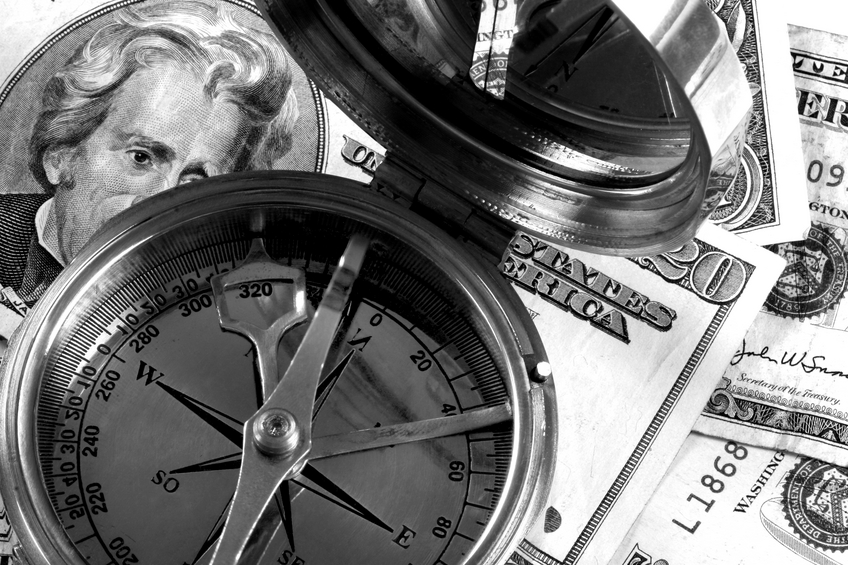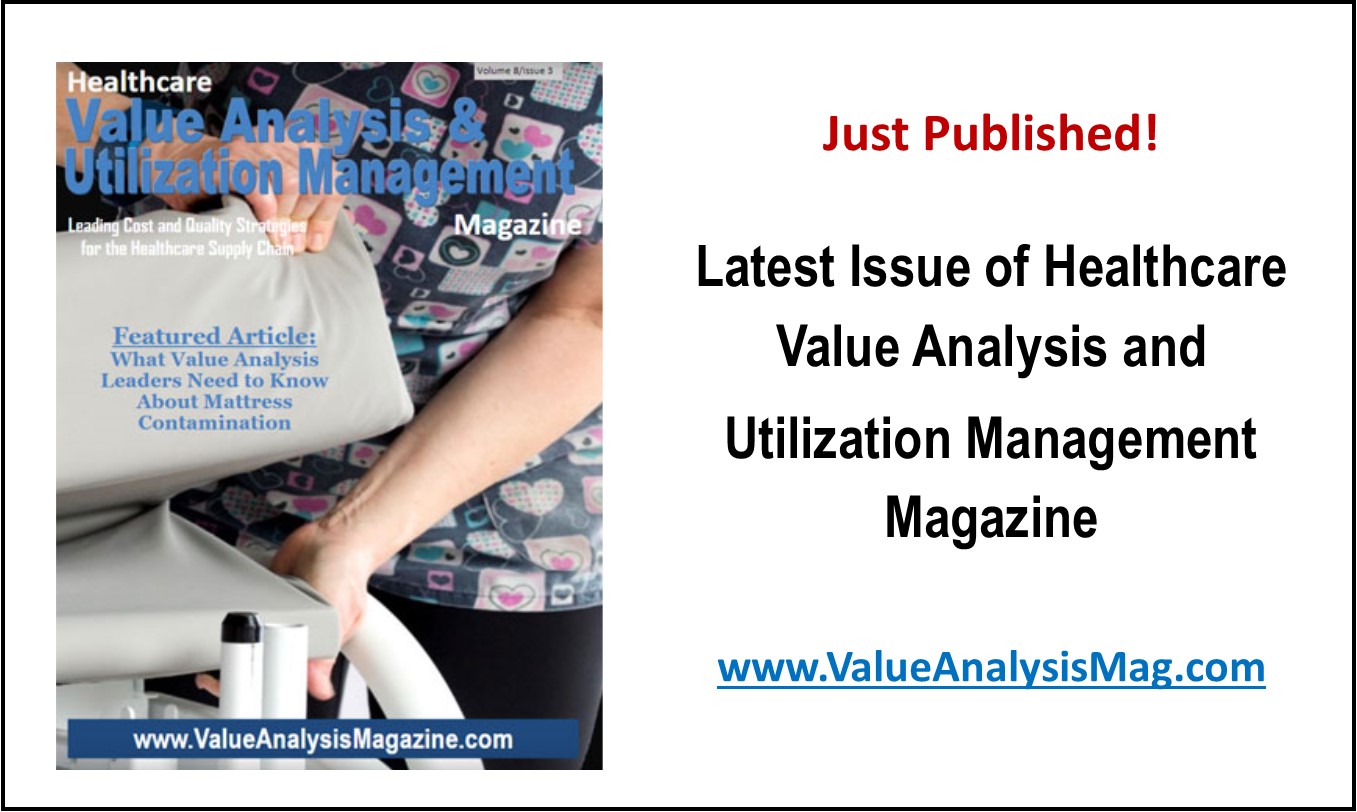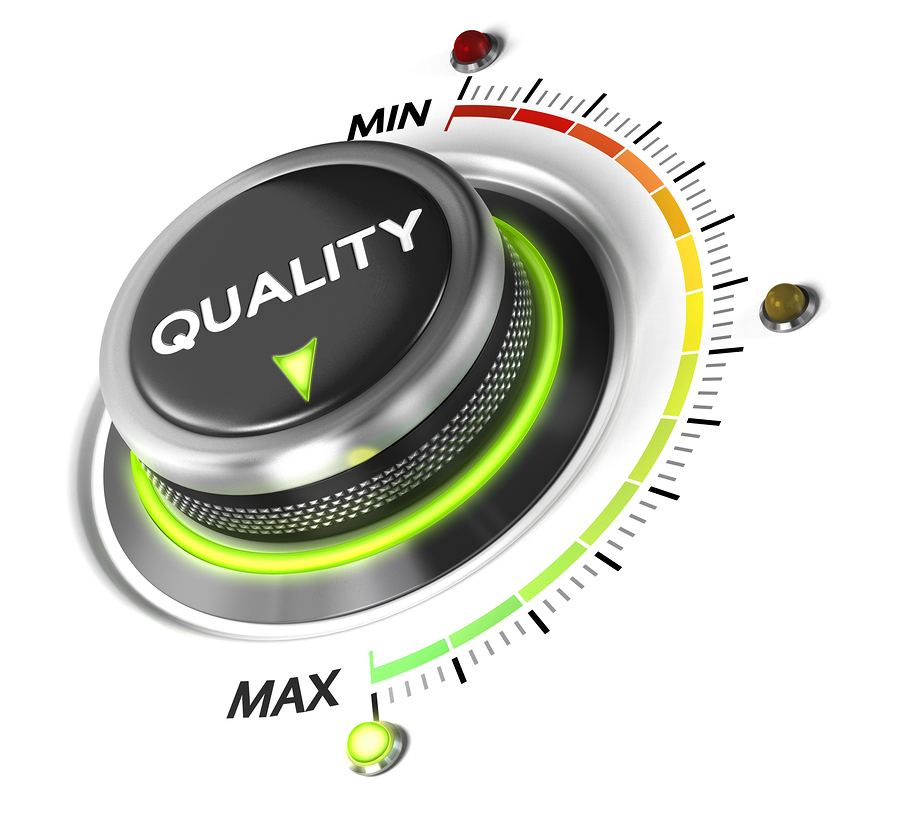Barbara Strain, Director, Supply Chain Analytics
University of Virginia Health System, Charlottesville, VA
Barbara Strain is a graduate of California State University and one of the founding members, past president and Board Member of the Association of Healthcare Value Analysis Professionals. She is also a frequent contributor to healthcare supply chain magazines on value analysis topics.
(HVAM) Can you give us a little bit of history about your healthcare career and how you got involved with value analysis?
(BS) My 35-year career can be divided into 3 phases; laboratory scientist specializing in clinical microbiology, laboratory management, and value analysis, all overlaid with non-profit professional organization governance experience.
Performing analytical work in clinical microbiology helped to prepare me in making the leap to value analysis. In clinical microbiology we handled each patient specimen knowing that it may be our only chance to do all we could to provide the information to rule a diagnosis in or out. Collaborations with the patient’s care team (physician, nurse, pharmacist, and respiratory therapist) were crucial to that patient’s outcome and prepared me for those hard healthcare discussions as I transitioned to value analysis.
When the University of Virginia Medical Center formed its own supply chain department, independent of the university, the leadership had the foresight to include a position for a clinical FTE to be part of their organization. The job description called for the clinical person to have experience in nursing, laboratory, respiratory therapy or other clinical discipline. I was lucky enough to be chosen and set on the course of developing a value analysis program.
I have been very lucky during my career and was given several opportunities to expand my knowledge base. One of the most valuable was participation in a green belt six sigma training program. This process improvement skill set, as well as other management tools, have translated seamlessly to operationalizing value analysis. I have a detective-like nature to begin with, so gleaning information from those closest to the patient is invaluable in identifying where the next best idea might come from to improve patient care or enhance the staff practice experience. I live by these two mottoes that have served me well during my career: People make problems, people can solve problems, and to win, you have to have a system.
(HVAM) Could you share with us your perspective on healthcare value analysis? In addition, explain your outlook before you became a value analysis professional through to your current viewpoint now that you are a senior value analysis leader.
(BS) When I started my career, hospital departments were called revenue centers. They did not focus on the number of FTEs and how to lower spend; they invested in research and other infrastructure and niceties no matter whether they were not for profit or private.
When DRGs were formulated, all that changed. Doing more with less, working smarter not harder and departments now called cost centers were all concepts we had to get a firm grasp on before they overran finances. Even though we may not have called it value analysis we looked at why we had certain processes and how could we do it better while keeping quality healthcare at the center of all we do.
Now the healthcare mind set is infused with value analysis. Using systematic proven processes we look at all aspects of a product life cycle; product standardization, ROI, safety, effect on procedure times or length of stay, reimbursement. As Bob Dylan, the ultimate poet of our generation sang, “the times they are a-changin’.”
When DRGs were formulated, all that changed. Doing more with less, working smarter not harder, and departments now called cost centers were all concepts we had to get a firm grasp on before they overran finances. Even though we may not have called it value analysis, we looked at why we had certain processes and how could we do it better while keeping quality healthcare at the center of all we do.
(HVAM) You are a recent past president and founding member of the Association of Healthcare Value Analysis, what impact has AHVAP had on your career?
To be a part of a grassroots effort starting an organization with fellow healthcare value analysis professionals has been and continues to be personally and professionally enriching. From day one, when we were eight people on e-mail asking each other about using certain products and sharing our experiences introducing new technology, continues to be one of the best learning environments I know of.
Additionally, my time on the board involved in non-profit organizational governance was one of the greatest honors. To work with the other board members to strategize how to serve the AHVAP membership, build upon the fertile foundation of previous leadership, and to promote the profession and professionals of healthcare value analysis was most rewarding.
(HVAM) Why is it so important to have a strong organization like AHVAP for Value Analysis professionals?
(BS) Value analysis has long been associated only as a term defining a process. While by definition is true, it does not embody the trained professional that identifies, recommends, and implements cost savings initiatives. The mission of AHVAP is to assist the value analysis professional. It is devoted to the professional and is represented in its membership qualifications that “members shall be involved in value analysis and employed by a hospital or health system”.
(HVAM) What role do you see for value analysis professionals with the implementation of the Affordable Care Act and all the cost cutbacks and new quality requirements?
(BS) The value analysis professional will continue to play a crucial role in contributing to the financial success of healthcare organizations. The difference, as we begin to enter the age of Accountable Care, is the grander scale of the initiatives and the speed in which they need to occur. Informed senior leaders are providing support to existing programs within their organizations or are establishing programs to be front and center. The time is right for value analysis professionals to contribute as many never have before.
(HVAM) With your experience, not only in value analysis but also supply chain analytics, how do you see the synergy between the two working successfully for value analysis professionals to reach their cost and quality goals?
(BS) Data, or should I say accurate source of truth data, is the grand neutralizer required to legitimize initiatives, gain support, and measure success. Reporting to and having other responsibilities within supply chain provided insights into the entire cradle to grave experience as products move throughout the healthcare environment. It made me a better, well-informed value analysis professional. The best example I have of the synergy between supply chain and value analysis is rooted in a question that was posed to me that went something like this, “Who decided what products would be stocked and used in my unit?” My immediate answer was, “A group of your peers,” which was followed by an explanation of our value analysis program and how they could provide input.
Contrary to popular belief, supply chain does not decide what products will be used in bedside care but plays an integral role in providing the data to arm the value analysis professional with the quantities that were purchased, the price of the goods, and the contract details as well as data to audit success of the initiative.
By understanding the logistics, post supply decision, a realistic time line could be set in motion to operationalize the successful introduction of the supply. Understanding the necessary steps from in-service training, establishing par levels, determining who would use the product, how it would be stocked, and entering information into the materials computer system are all keys to success. As Helen Keller so aptly said, “Alone we can do so little; together we can do so much.”
(HVAM) Could you share with us a recent success that you have had with a value analysis project at your organization?
This success story involves collaboration between nursing, the wound/ostomy/continence team, supply chain operations, and value analysis. One of the patient safety initiatives is reducing pressure ulcers. We tackled this in a coordinated team fashion including evaluation of products, use of products for extended time on pilot units to determine efficacy and costs/patient, reviewing bed making/linen guidelines, turning and mobilization of patient, and administrative support for dedicated skin champions in each nursing unit.
The project started in 2010 and final products and skin integrity guidelines were rolled out in summer 2012. This is an example of an initiative that increased overall product costs but decreased the hospital acquired pressure ulcer rate to 1% which is the equivalent of preventing 577 HAPU (hospital acquired pressure ulcers) with a related savings of $5M. Each member and department involved in the success of this project were publically praised for the collaboration toward improving patient safety.
(HVAM) As a senior value analysis leader, what advice would you give a new value analysis professional to help them advance their career in the right direction?
The value analysis professional should take stock of where in their organization structure they and their department reports. If not reporting directly to a Chief/VP then they should be reporting to someone who has a position high enough in the organization that can influence senior leadership. Support from senior leadership for value analysis initiatives is key to financial and patient quality successes.
Initiatives should range from supply conversions to standardization of supplies and practice, as well as physician procedure use items and overall utilization per MS DRG. This activity requires individuals trained in value analysis who have clinical experience, supported by data analysts who mine internal and external sources and a direct link to supply chain management. Finally, today more than ever, value analysis professionals need to stay in touch with one another through organizations such as AHVAP. Networking and knowledge sharing, whether live or virtual, is the life line to past, present, and future strategies that could make a difference in their organization’s success.
(HVAM) You recently were part of a team of AHVAP Senior Value Analysis Professionals who created a Value Analysis 101 and 201 training program which you previewed at AHRMM 2013. Will this program roll out fully at AHVAP 2013 in October? Could you share some highlights or key thoughts about the programs?
Most of you may know that AHRMM rolled out a new movement centered on cost, quality, and outcomes. Through organization-to-organization networking, AHVAP was asked to participate in their annual meeting by bringing value analysis principles to their healthcare materials and resource management membership.
A team of five AHVAP members developed two half day pre-conference workshops for the AHRMM 2013 annual conference. Gloria Graham and Colleen Cusick led the Value Analysis 101 session outlining the elements of a value analysis program, program structures and membership, as well as basic tools for decision support and other getting-started principles. James Russell, Terri Nelson, and myself led the Value Analysis 201 Advanced Concepts in Value Analysis session where we reviewed strategies in addressing physician preference items, product standardization and utilization, as well as how to engage physicians in value analysis. Both programs were well received at AHRMM as evidenced by positive comments in their evaluations.





